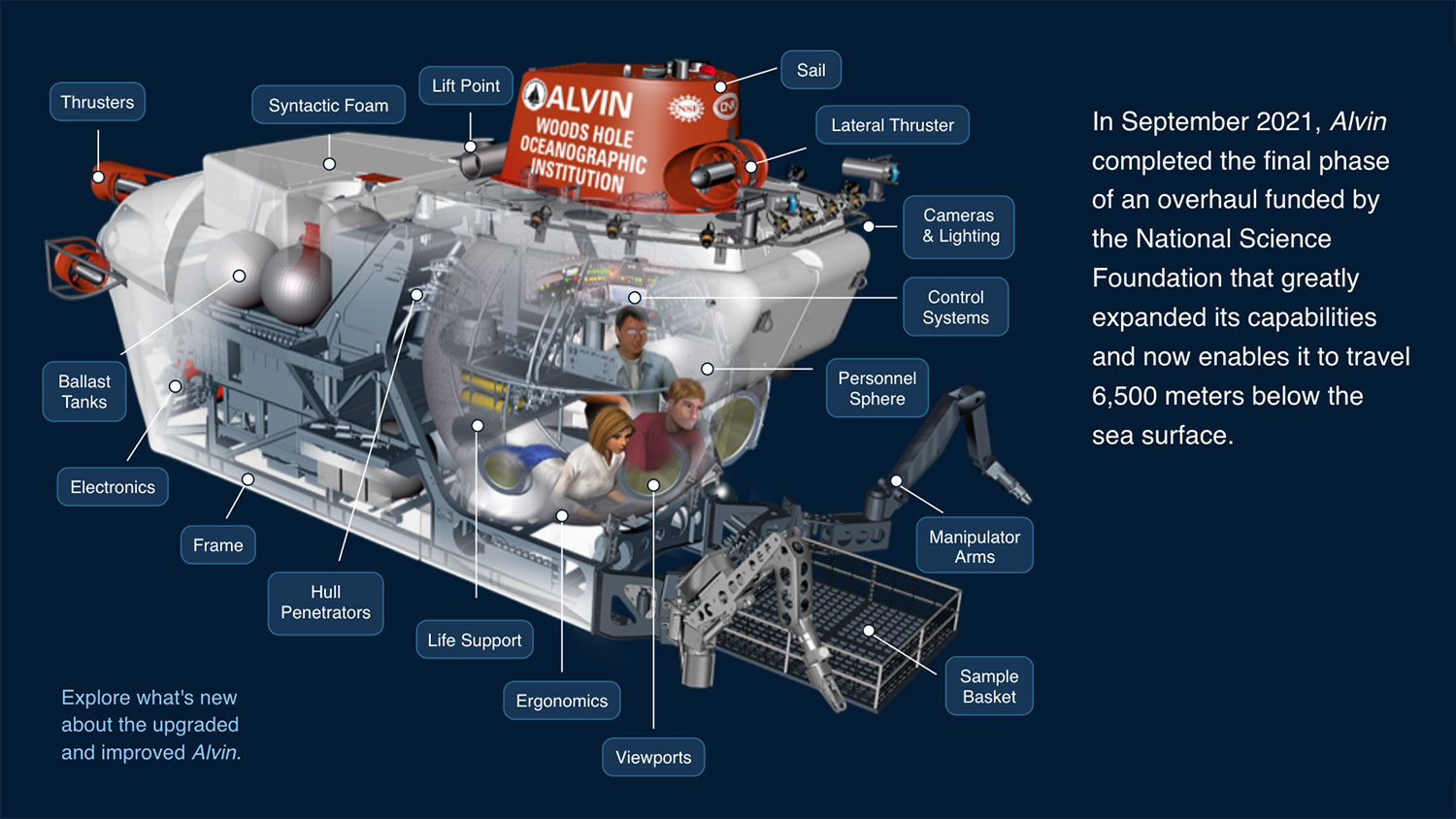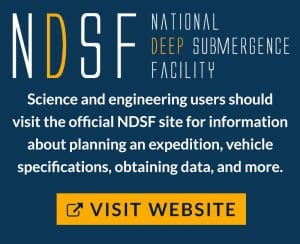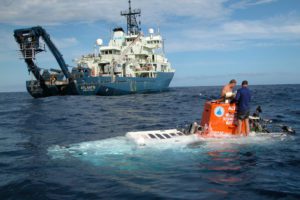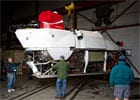HOV Alvin
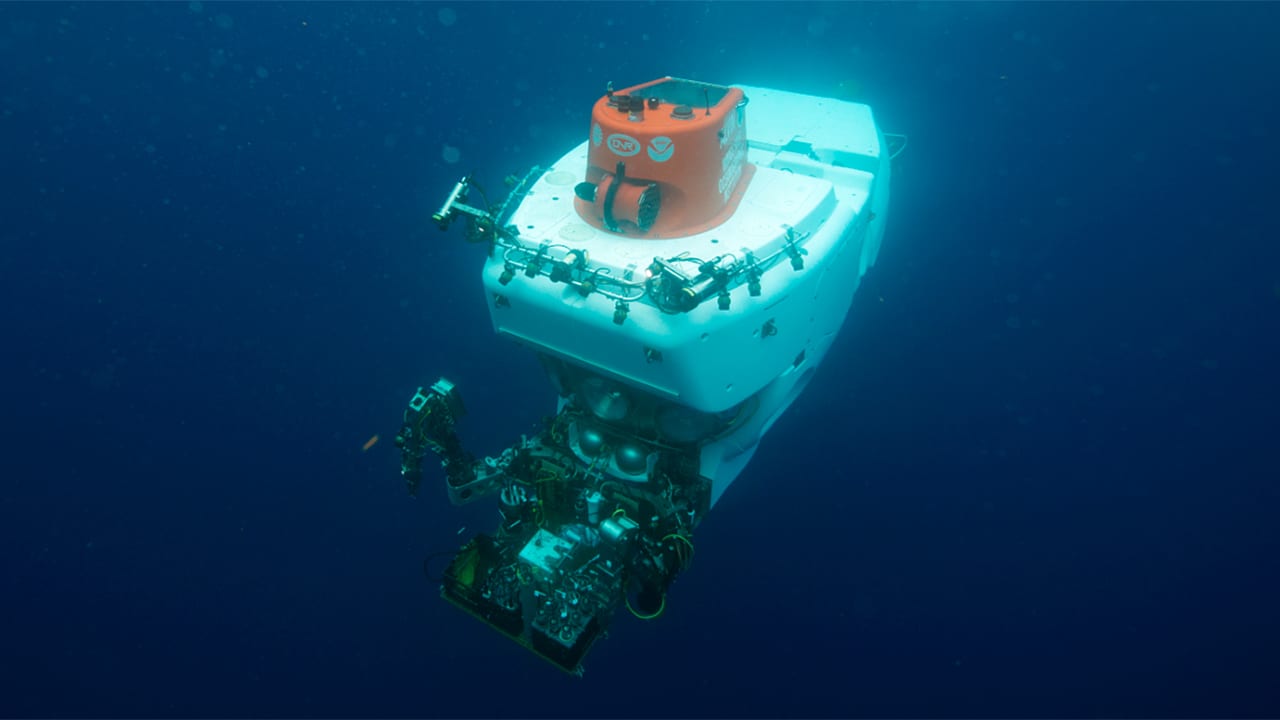
Human Occupied Vehicle (HOV) Alvin is part of the National Deep Submergence Facility (NDSF). Alvin enables in-situ data collection and observation by two scientists to depths reaching 6,500 meters, during dives lasting up to ten hours.
Commissioned in 1964 as one of the world’s first deep-ocean submersibles, Alvin has remained state-of-the-art as a result of numerous overhauls and upgrades made over its lifetime. The most recent upgrades, begun in 2011 and completed in 2021, saw the installation of a new, larger personnel sphere with a more ergonomic interior; improved visibility and overlapping fields of view; longer bottoms times; new lighting and high-definition imaging systems; improved sensors, data acquisition and download speed. It also doubled the science basket payload, and improved the command-and-control system allowing greater speed, range and maneuverability.
With seven reversible thrusters, it can hover in the water, maneuver over rugged topography, or rest on the sea floor. It can collect data throughout the water column, produce a variety of maps and perform photographic surveys. Alvin also has two robotic arms that can manipulate instruments, obtain samples, and its basket can be reconfigured daily based on the needs of the upcoming dive.
Alvin's depth rating of 6,500m gives researchers in-person access to 99% of the ocean floor. Alvin is a proven and reliable platform capable of diving for up to 30 days in a row before requiring a single scheduled maintenance day. Recent collaborations with autonomous vehicles such as Sentry have proven extremely beneficial, allowing PIs to visit promising sites to collect samples and data in person within hours of their being discovered, and UNOLs driven technological advances have improved the ability for scientific outreach and collaboration via telepresence
Alvin is named for Allyn Vine, a WHOI engineer and geophysicist who helped pioneer deep submergence research and technology.
Click on the image below to learn more about HOV Alvin.
Recent News
Test dives for Alvin’s 6500 meter certification have been postponed, a day after the sub reached a record 5338 meters (17,513 feet)
News Releases
HOV Alvin recognized as one of world’s most important deep-sea scientific instruments
After three weeks in the Puerto Rico trench and Mid Cayman Rise, Alvin is certified to return to research with its new max depth of ~4 miles
World’s most successful research submersible reaches 6,453 meters, its deepest dive ever Woods Hole, MA – Today, the human-occupied submersible Alvin made history when it successfully reached a depth of…
Woods Hole Oceanographic Institution has been awarded an Emmy as a co-producer, along with South Florida PBS (WPBT & WXEL) for Changing Seas: “Alvin: Pioneer of the Deep” . The 2021 Suncoast Chapter of the National Academy of Television Arts & Sciences Emmy Awards announced the honor in December, for the category “Environment/Science – Long Form Content.”
WHOI in the News
Oceanus Magazine
Duke University Stories
August 2017
Two Duke Scientists Go To Sea with Alvin
For two weeks last summer, a pair of marine scientists joined the venerated submarine to explore the ocean shelf off Massachusetts
Journal of Ocean Technology
May 2017
The Deep Submergence Vehicle Alvin
An Advanced Platform for Direct Deep Sea Observation and Research
Alvin's 60th

Since 1964, the human-occupied submersible Alvin has helped scientists expand human knowledge of the ocean and inspired countless more to learn more about the ocean.
Celebrate Alvin's 60th with us!
Alvin/Atlantis Tracker
Featured Video
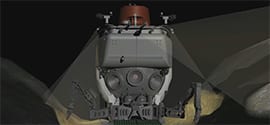
Dive Deeper: Alvin Takes You There
Explore the sub, meet the scientists, and learn how Alvinenables ocean exploration and research
Special Multimedia Feature

Inside the Alvin sphere
Take a 360 tour inside the sphere where researchers and the Alvin pilot sit while exploring the deep sea.

